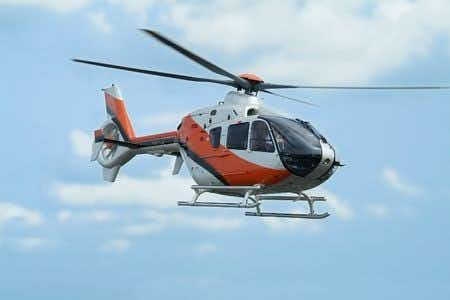Expert witnesses who specialize in aerospace, aviation safety, and aviation appraisal discuss a fatal helicopter crash that killed two people and injured 3 others. This case takes place in Oklahoma, where a helicopter that had previously underwent brazing for the rotor blade, attempted to aerially photograph a nearby forest. It performed a steep-angle takeoff, climbing until above tree level. It then made a left turn, which developed into a fast spin to the left, completing three revolutions. The aircraft climbed to approximately 100 feet above ground level before entering a near vertical descent, impacting the ground on the right lower quadrant of the fuselage at an estimated 39 Gs. The airframe buckled and roof collapsed, buckling inward into the cabin area. Two occupants were killed and three others were severely injured.
Witnesses familiar with aircraft said it appeared something mechanical had malfunctioned on the helicopter.
Question(s) For Expert Witness
Did the helicopter meet appropriate standards for crash worthiness?
Expert Witness Response
According to the Aircraft Crash Survival Design Guide, vertical impact conditions with the landing gear extended and the rotor/wing lift equal to the design gross weight, the aircraft should withstand a 42-foot per second vertical impact, without reducing the height of the cockpit or cabin by more than 15 percent and/or causing the occupants to experience injurious accelerative loading. Support of all mass, including seats attached to overhead structure, must be provided.
An aircraft design requires a number of distinct features for crash survival. First, and most important, the structure surrounding occupiable areas must remain reasonably intact, without reducing occupant living space to the point of creating a hazard. If occupants are injured because the protective shell collapses around them, then efforts to improve survivability through other methods are futile. An aircraft which does not provide the protective shell can never be considered crash-resistant. Second, the structure and the seats should be designed to attenuate occupant accelerations to survivable levels and to retain large mass items, interior equipment, seats, and cargo. In addition, cabin penetration should be minimized.
However, due to the collapsed ceiling, the suspended seats became ineffective for energy attenuation. The seats were no longer attached to the ceiling. As a result, the occupants felt the full impact with no attenuation of 27.7 Gs. Additionally, the seats were designed to attenuate at 14.5 Gs, meaning that the ceiling collapsed before the seats could stroke. That means that the ceiling structure did not meet the 42 feet per second vertical velocity recommendation outlined in the Aircraft Crash Survival Design Guide. Additionally, because the seats did not stroke, moving the occupants away from the collapsing ceiling, each of their heads were impacted by the ceiling causing serious to fatal injuries. And because the seats did not attenuate, the survivor and fatally injured occupants received major spinal injuries.
If the manufacturer was aware that the failure of the ceiling would occur prior to the seats attenuating at 14.5 Gs then it should not have recommended and/or installed ceiling mounted seats.
The expert is a consultant and former FAA and NTSB investigator with more than three decades of experience. He has authored more than 100 safety recommendations.
About the author
Michael Morgenstern
Michael is Senior Vice President of Marketing at The Expert Institute. Michael oversees every aspect of The Expert Institute’s marketing strategy including SEO, PPC, marketing automation, email marketing, content development, analytics, and branding.

